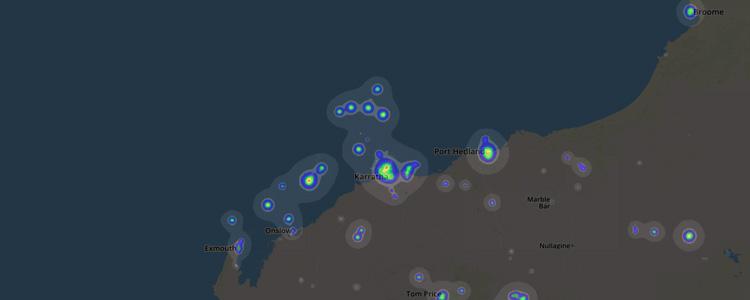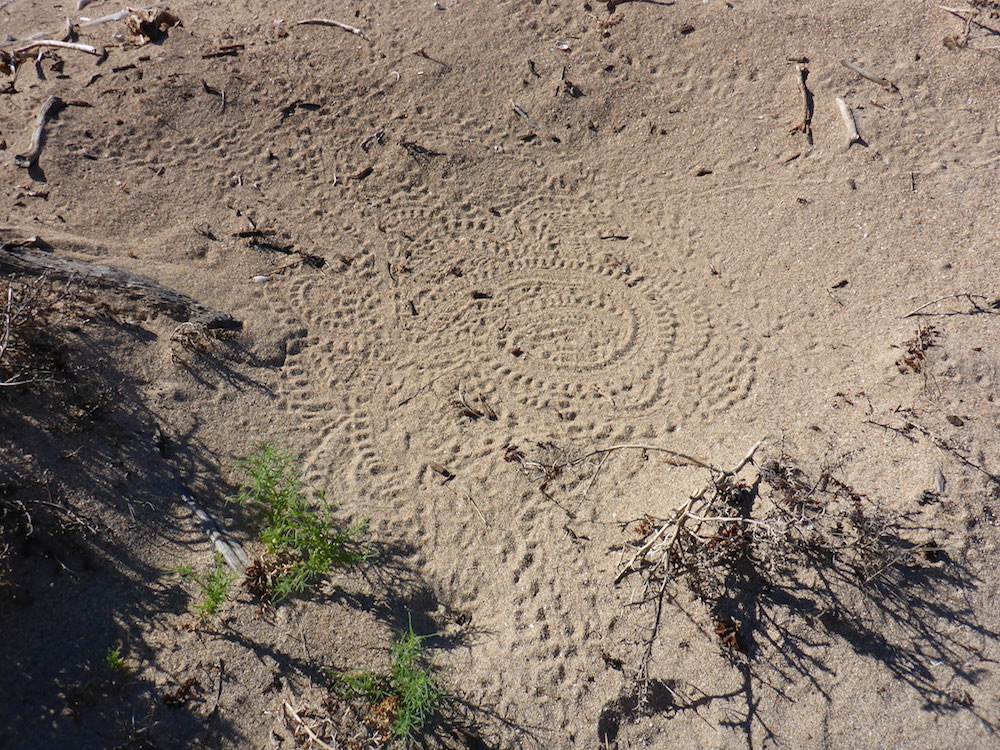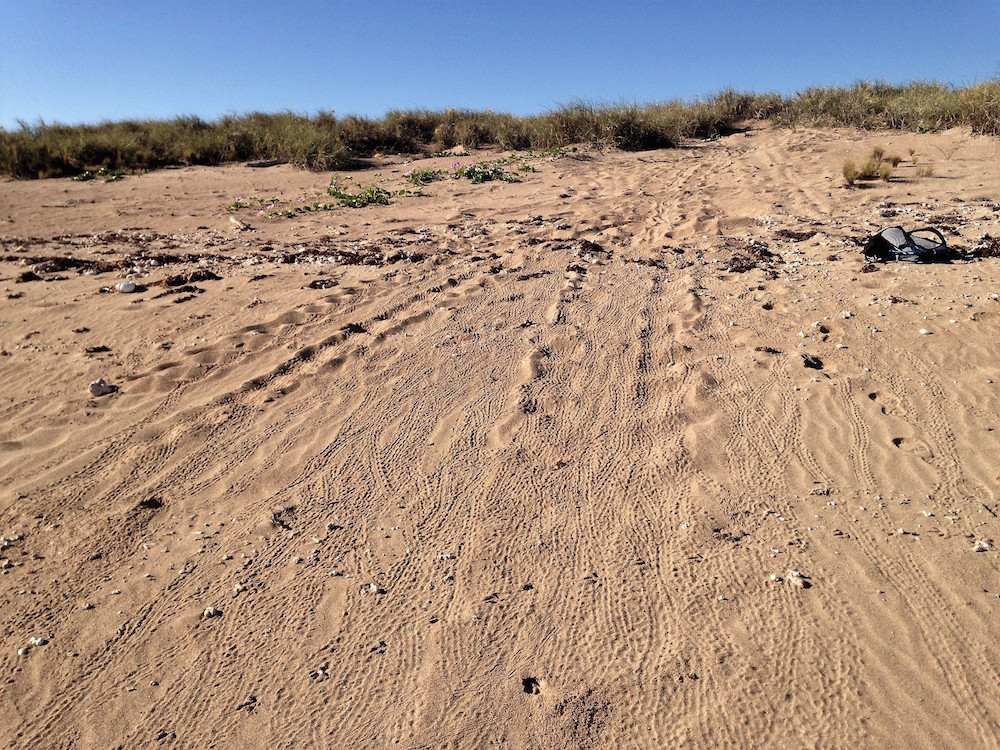
The remote Kimberley and Pilbara coasts have naturally been a dark haven for turtles, however with the development of the mining and the oil and gas industries, the North West Shelf is now surprisingly well lit up, both from developments on the mainland and from the extraction industries based on islands and in the ocean.
Light causes a couple of problems for adult female turtles when it is visible from beaches.
Firstly, too much light may deter females from nesting at that site.
Secondly, if the turtle does come up onto the beach artificial light can confuse the turtle on its return to the water.
Naturally female turtles use cues such as the slope of the beach and looking for the lightest horizon to find their way back to the water after laying their eggs.
Usually the ocean looks brighter than the land at night, but artificial light can mimic this effect and confuse turtles.
These female turtles head away from the ocean and often become exhausted, dehydrated, or entangled in dune vegetation.
Similarly, hatchlings can become mis-orientated by artificial light when they emerge from the nest, so heading up into dune areas.
Alternatively, hatchlings can become disorientated, moving around in circles to try and find their way to the ocean.
This effect is critical for hatchlings, as they have limited energy reserves that they take with them from the egg.
Hatchlings that head in the wrong direction become exhausted or dehydrated and face a much greater risk of predation.


What we are doing:
We are researching the impact of lights in water close to rookery beaches.
Early signs are that hatchling turtles are also attracted to lights in the water if they are positioned close to rookery beaches.
This means that jetties and moored boats can also potentially attract hatchlings, slowing their movement to safer open water, and delaying them in the predator-rich near-shore areas.
Research is exploring new technology to reduce the impact of light from coastal areas.
Light monitoring will also be established to compare rookeries with no light, residential light levels and industrial light levels to improve knowledge on the level of impact different light conditions have as well as to understand how to better manage light.
We encourage industry, companies, councils, organisations and coastal urban communities to develop and use best practice in light management.
North West Shelf Flatbacks, with the Australian Government’s National Environmental Science Program (NESP) Emerging Priorities Funding has provided funding towards developing light pollution guidelines. The Australian Government Department of Environment and Energy has recently published National Light Pollution Guidelines Including Marine Turtles, Seabirds and Migratory Shorebirds.
We can aid coastal urban communities to convert to turtle-friendly lighting. Contact us for more information.
What you can do:
If you live close to rookery beaches there are some simple steps you can take to reduce the light impact on turtles:
- Turn off unnecessary lights that shine towards beaches at 10PM, close curtains and blinds or put motion sensors on outdoor lights so they only turn on when necessary.
- Position outside lights low to the ground and point them away from the beach.
- Place shades on lights on the beach side, or plant buffers to reduce the light glow to the beach.
- Use low-pressure sodium vapour lights outside, as these have been proven to have less of an effect on turtles.
- Turn off unnecessary indoor and outdoor lights and close blinds and curtains.
If installing lights on commercial premises look at the light guidelines:
Environmental Assessment Guideline for Protecting Marine Turtles from Light Impacts
If holidaying or boating close to rookery beaches:
- Turn off deck lights when not in use, close cabin blinds.
- Use a red torch on deck if possible.
If camping or walking close to/on the beach at night:
- Use a small torch of less than 3 volts, preferably on a red light setting.
Other things you can do to help:
- Let others in the community know how light impacts turtles and encourage them to also adopt the light-friendly strategies.
- If you have a business and would like to help spread the word you can register as a turtle light friendly business and you will receive stickers and further information to help you to reduce your light impact and spread the word to others. For more information register here.
- Funding may be available to assist with implementing light strategies that assist turtles.
